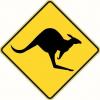Ok, so I am an unapologetic tinkerer, and my brain is currently orbiting around my desire for more wood planes. A horrible problem I know. I am almost convinced I can make myself that moving fillister plane, but I should probably start with something easier.
Now my question is a little more basic. For making wood bodied planes, the traditional choice is beech. I have seen people mention cherry, or any fruit wood. Normally 8/4 is the mentioned thickness and quarter-sawn.
So here's my question. Is there a mechanical, design, or performance reason to not glue up the plane body from smaller stock? Typically a laminate is stronger, more stable, etc (ala plywood), but I've never seen a reference to it.
How does walnut perform for a wood body plane? I have a local source of it that's ridiculously cheap, so it's my go-to wood for projects. I think I can get some cherry and it's probably 4/4 flat-sawn, so I'd have to glue up a blank.
Thanks!




 Reply With Quote
Reply With Quote




